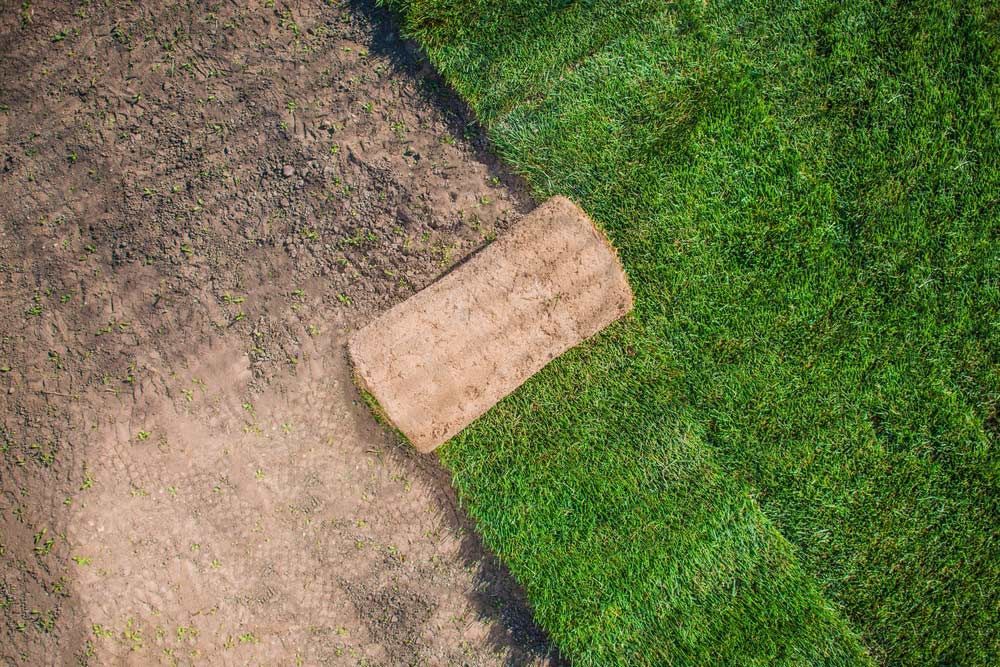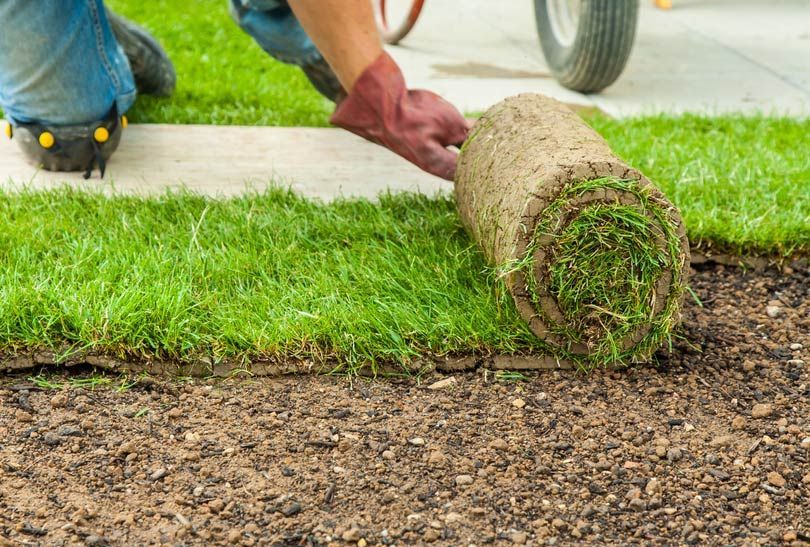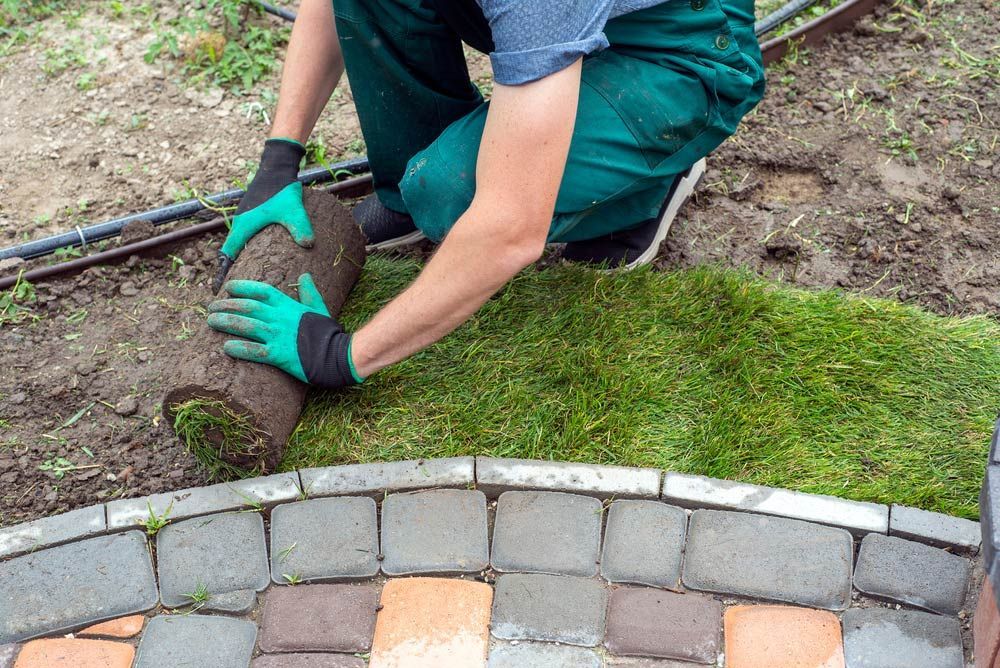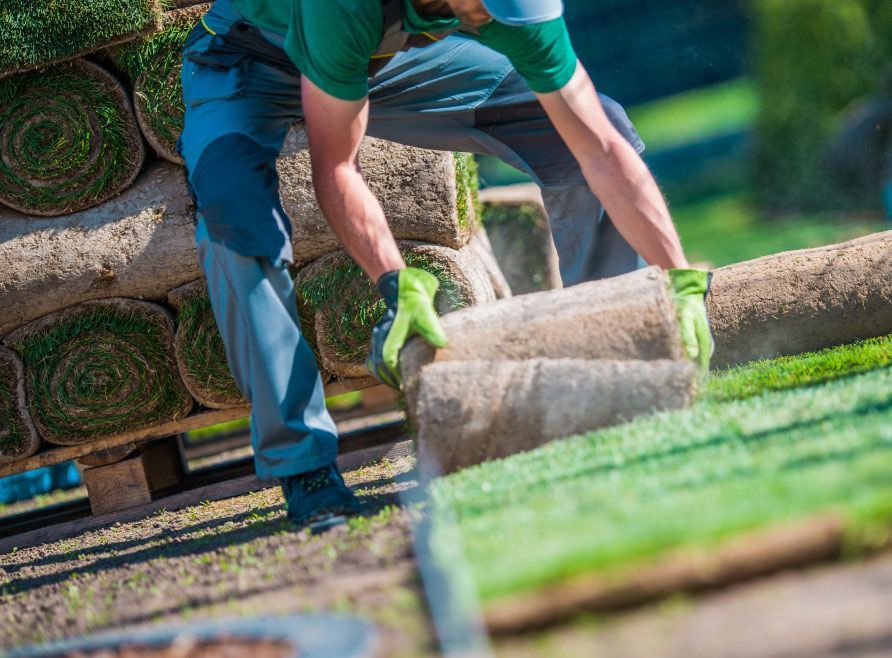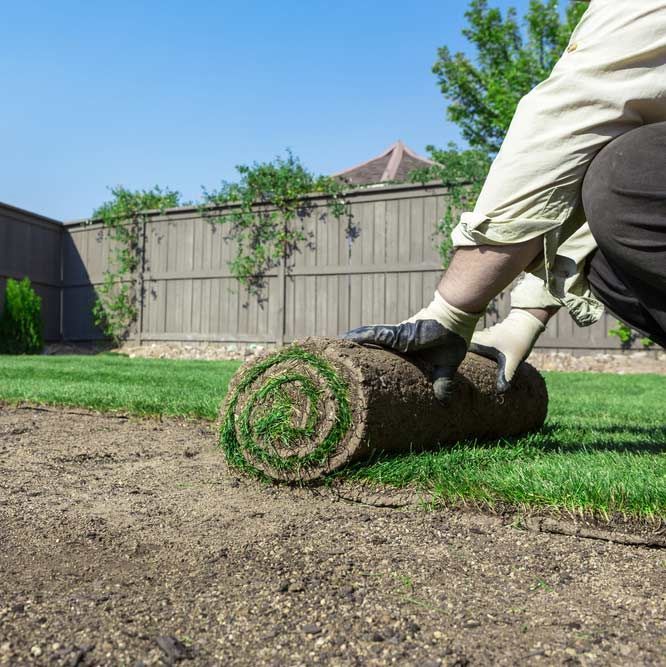Quality Turf Preparation in Newcastle
WE SERVICE LAKE MACQUARIE, THE HUNTER VALLEY, MAITLAND AND NEWCASTLE
Turf Laying Techniques
Making sure your lawn investment pays off starts with properly laying your turf. In order to get the best results, we recommend the following steps:
Measuring
Sketch the areas to be turfed and break these areas into squares, rectangles or circles–especially if you have a large area to work with. Measure each area and calculate how many square metres are in each one. Make sure that you order extra so you can compensate for miscalculations. If in doubt, leave the measuring to professionals.
Preparation
Remove rubble, rubbish, weeds, loose stones or any other objects that will affect your installation. Check to see if your soil type needs improving or if it is suitable to the turf you are installing. Aerate the ground to an approximate depth of 15cm. Make sure you do not have drainage issues and assess whether the area needs excavating or filling. Remember to rake the top soil and to gently tread it down.
Installation
First of all, you should have your turf delivered on the day of installation. If it arrives a day before, you should still lay it somewhere and you need to water it to keep it moist.
Once you’re good to go and you’ve got about 100mm of underlay levelled, apply a starter fertiliser. This will support the lawn during its establishment phase and boost deeper root growth. Lay the turf down with the longest straight edge first and lay the rolls closely together. Make sure you stagger the joints without stretching the turf.
Your turf has a high chance of survival if you keep the rolls intact. It is better to cut off than to add on, so do not use bits and pieces at edges if you can help it. Be sure to tread the turf down with a roller or the back of a steel rake. After installation, water the turf until it is soaked through.
Lawn Maintenance Tips
Even if your turf doesn’t require high upkeep, there are things that you must remember to maintain the beauty of your lawn. Here at Aussie Turf Supplies, we recommend the following dos and don’ts when maintaining your lawn:
Do’s
- Neatly roll out the turf over a levelled topsoil
Before laying, fertilise the area with lawn food or starter fertiliser. Roll the laid turf with a roller or tap the edges using the base of a rake. This ensures that the turf is in good contact with the topsoil and also reduces stress during hot weather conditions.
- Water turf right after laying and rolling
When laying turf on a large area, make sure that you water after laying and rolling each section. Give the turf a good soaking for the first week and wet through to the soil on alternate days during the second week. After two to three weeks, the turf should have taken roots already and you can afford one good soaking once a week during the dry season.
- Check if the roots are attached to the ground
To know when it’s fine to mow your turf, see if the roots are firmly attached and can no longer be lifted from the ground. During your fist mow, take only one-third of the leaf. Lower the mower gradually during each cut until it’s approximately 30 to 50mm.
- Be sure to replenish soil nutrients.
- Nitrogen is needed for leaf growth;
- Phosphorus is for root growth;
- Potassium strengthens leaves.
These are needed so your lawn will not have signs of deficiency. Feed your lawn with complete fertilisers at least two times during its growing season.
Don’ts
- When laying, do not leave gaps between rolls because it will make an uneven surface. It will also be difficult to mow uneven lawns and it also encourages the growth of weeds.
- Make sure that a new lawn doesn’t dry out. Do not water in the evenings because leaving them wet at night can start diseases.
- Do not mow your turf too early in its growing season or too late. Do not scalp your lawns because it will give the turf a shallow root system making it prone to weeds and stress during hot weather conditions.
36 Years in Business
Various Turf Options
Locally Owned Business
Lawn Care Tips
To effectively care for your lawn, you must first determine the type of grass you have. Different types of grass require different lawn care solutions. It’s best to talk to the lawn expert at Aussie Turf Supplies to ensure you understand the type of grass you are dealing with.
Your lawn watering schedule will be dependent on weather conditions, the type of grass, the lawn colour and, of course, water restrictions. The best way to water your turf is with an automatic underground sprinkler system or with laid soaker hoses. It is advisable to water your lawn during the early morning rather than at night. Over fertilising your lawn is definitely not a good idea. Four times a year with one application during early spring can do wonders for your lawn. Before mowing, make sure you remove all weeds. Removing weeds is important for maintaining the health and beauty of your lawn.
Always remember to mow properly. Improper mowing can damage your turf. Mowing frequency will depend on the type of grass and the season. Do not attempt to mow your lawn if the soil is dry. Of course, mowing frequency will also depend on how fast the grass is growing. Make sure your lawn mowers are maintained properly, and the blades are kept sharp.
Lawns with high foot traffic, like playing fields, will benefit from aeration. This means removing small cores of soil and punching holes. This will relieve soil compaction and will help improve air and water movement. This will result in increased rooting and improved turf grass health.
Lawn clippings should be used properly to ensure correct lawn care. Lawn clippings must be spread evenly and thinly so they don’t shade the grass. Lawn clippings are used for mulch, either spread onto garden beds or back onto the lawn. It is important to note that you should avoid piling lawn clippings because they are hazardous and dumping lawn clippings is illegal.

